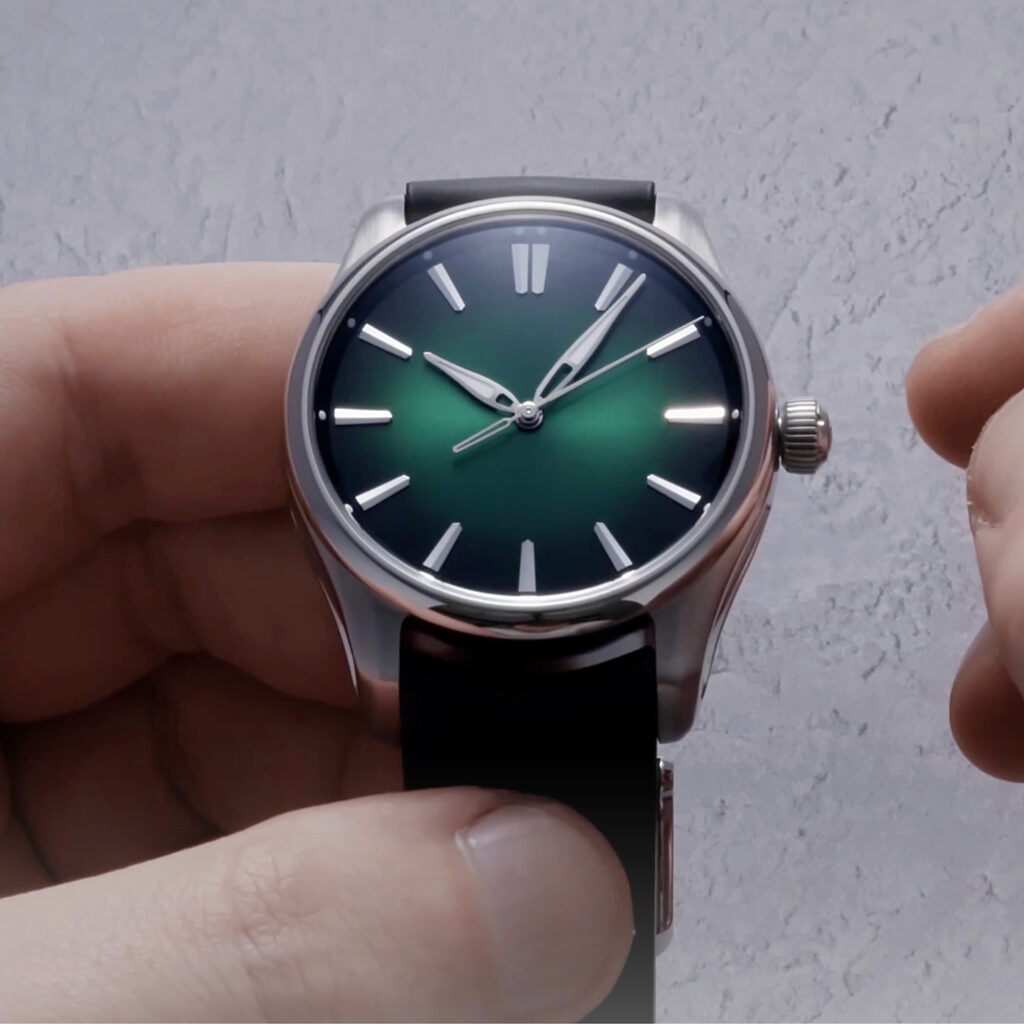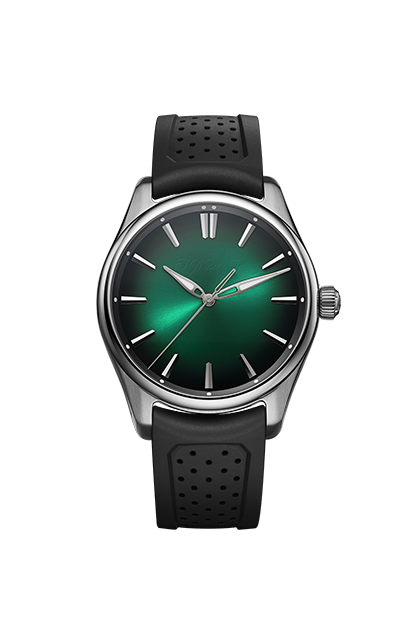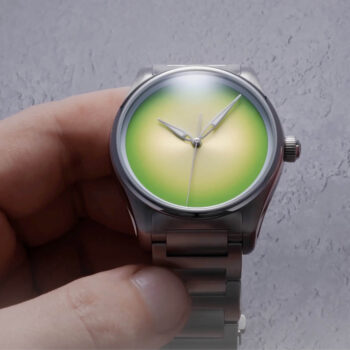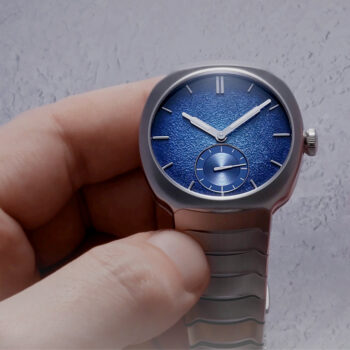A pioneering endeavour
Moser took the Endeavour and repackaged it into a sportier format in 2015 with the Pioneer—a collection for those who appreciate traditional watchmaking and also have a sense of adventure. While many high-end watchmakers might shy away from such a challenge, Moser embraced it, upping the ante with a tourbillon and even a Cylindrical Tourbillon Skeleton within the Pioneer collection.
What makes the Pioneer so versatile is its broad-shouldered case with 120m water resistance and luminous dial elements. But what truly sets it apart is the dial, which serves as a stunning canvas. The deep fumé sunburst channels the giant clouds of space dust that both form the nurseries where new stars are born and are remnants of stars that have reached the end of their lives.
When imaging these deep space nebulae, the Hubble Space Telescope team assigned specific colours to different elements of the universe: red for Sulphur II, blue for Oxygen III, and this Cosmic Green for Hydrogen-alpha—the most abundant element in the universe.
With the centre seconds of the Pioneer sweeping over this glowing green canvas of life-giving material, you can’t help but pause and wonder about our fleeting moments in this vast universe, and how we choose to use them. This gorgeous green dial reminds you that life really is too short not to enjoy.
It takes over 200 painstaking steps to achieve this hypnotic dial glow, previously seen on the Endeavour Centre Seconds Concept Cosmic Green and the larger 42.8mm Pioneer Centre Seconds. The colours and gradients are created layer by layer. That’s why the sunburst on a Moser fumé dial appears to see right into your soul. This particular colour was also reserved especially for the LM101 collaboration with MB&F, and the MB&F Endeavour Cylindrical Tourbillon collaboration with Moser.
Polished, faceted hour markers are applied onto the dial, each with a dash of luminous paint—doubled at twelve o’clock—to ensure readability at night. Or in a cave. Or deep underwater. Basically, whenever you venture into darkness—where you almost certainly won’t see the logo, applied in transparent lacquer. It only becomes visible when the light hits just right, allowing you to enjoy the dial in all its uninterrupted glory.
It’s the second Pioneer to arrive in a 40mm format after the chilly Arctic Blue, and from that watch also comes the leaf-style handset, skeletonised at the base and filled with luminous paint from mid to tip. Like the dial, it’s an evolution of the pure elegance of the Endeavour in a sportier direction, with the case undergoing the most significant transformation. The scalloped sides of the Endeavour morph into deep grooves on the Pioneer, reaching down into the lugs like a pair of mechanised gills, reminding you that the watch will function at depths of almost 400 feet.
A look inside
This otherworldly timepiece is powered by the HMC 201 movement, offering 72 hours of power reserve. Flip the watch over, and you’ll notice the intricate mechanics inside. The going train, centre seconds, and automatic winding system are complex and unexpected, with the rotor weight pared back to provide an unobstructed view. The dark grey finish showcases how traditional mechanical watchmaking pairs perfectly with the watch’s modern, sporty aesthetics.
Made for a wide range of wrist sizes
As if Moser were urging you to wear the Pioneer for your next adventure, the watch is dressed on a perforated rubber strap with a buckle to keep it comfortable and protected from the elements. With the short lugs, it wears exceptionally well across a wide range of wrist sizes. I imagine on a cheeky leather strap its versatility would become even more apparent. It’s just one watch, but it could very easily be all the watch you ever want.
A little piece of the universe
Short of the Hydrogen-alpha represented by the Cosmic Green dial, there’s little in this universe that will outlast this watch. The fact that it’s priced closer to other, much less interesting sporting watches—even those also in green—makes it even more appealing. This Pioneer offers a ground-floor opportunity to own a piece from Moser’s collection, coupled with the visual splendour of the HMC 201. And really, it begs the question: why wear something boring when you could be wearing this instead?










